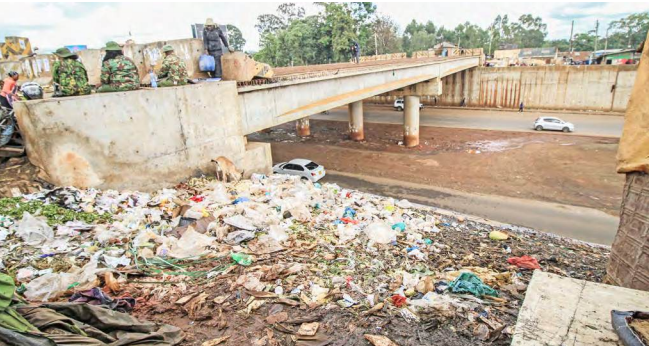
From potholes to flooded roads to
overflowing sewage lines, enhanced
short rains have wreaked havoc in
Nairobi.
Some roads have turned into
mini-water bodies, putting many
lives at risk and damaging vehicles.
Residents have accused Governor Johnson Sakaja’s administration of sleeping on the job. The Karuna Close road in Westlands has become a nightmare.
Kilimani, Kileleshwa, Lavington and Upper Hill neighbourhoods are also bearing the brunt of neglect. On Jogoo Road, some residents have resorted to fixing potholes themselves.
Nairobi government has however absolved itself from blame, saying it is not responsible for the poor infrastructure.
Sakaja said some of the bad roads are under the jurisdiction of the Kenya Urban Roads Authority.
“I saw a video the other day of vehicles hitting potholes on Jogoo Road… some of those roads are under national agencies,” Sakaja said.
Meanwhile, the governor recently pledged to mobilise Sh11 billion to repair some roads. Contractors are also working to restore walkways in Kilimani estate.
Markets in Kangemi are a mess. Besides floods, heaps of garbage remain uncollected, putting the residents at risk of contracting viral diseases.
The same situation is in Kawang ware, Kibera and a larger part of Eastlands.
“Nairobi is now a forgotten place. Why would the government collect money from us and not improve our living and working conditions?” asked Mary Njoki, a fruits vendor in Kangemi.
“I sell fresh fruits here but because of flies and dirt, customers are not coming in numbers. This is an economic sabotage. The saddest part is that the situation is posing a health risk to me and my customers.”
A number of videos showing frustrations of Kenyans over poor road conditions have been shared online.
“I’m stuck at Parklands and live
along Thika Road. Double tragedy.
Hii ni kama leo nitalala kwa bar nikunywe soda madiaba (It looks like I
will spend the night in a bar drinking soda),” said a motorist. One social
media user suggested the floods be
diverted to State House.











